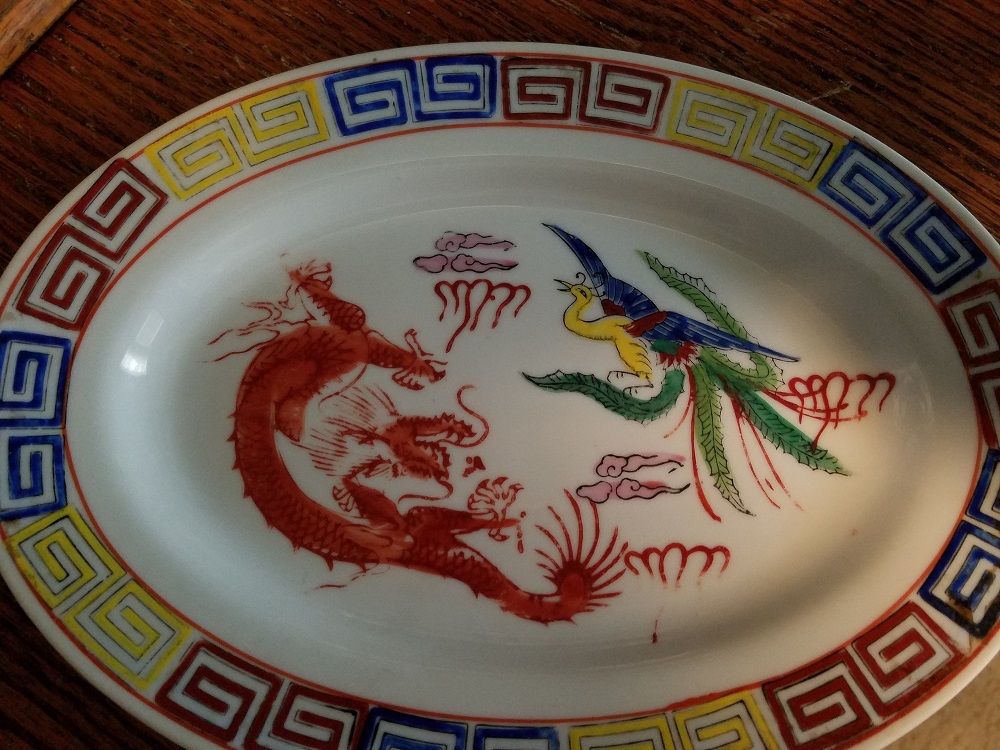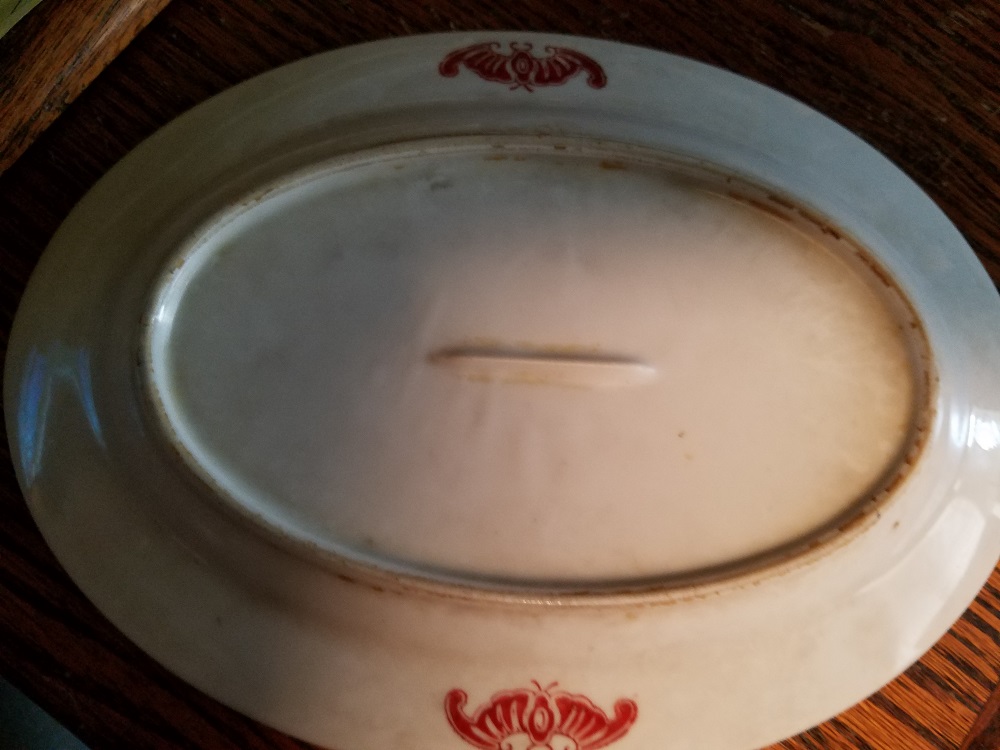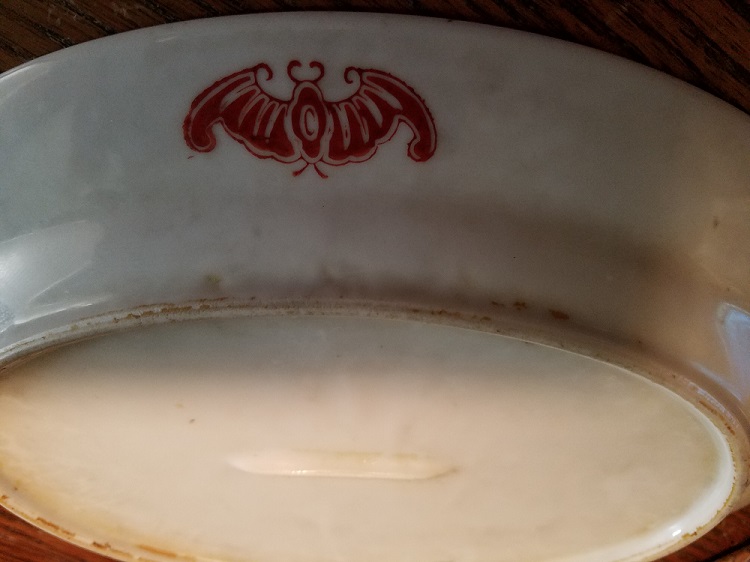
|
Subject:Re: Information on Dish and Symbols Used, Please
Posted By: Bill H Sat, Aug 25, 2018
This is a "contending dragon-phoenix" design on transfer-decorated porcelain, perhaps an ornamented blank from Hong Kong or something made entirely in Japan (more below on that).
Dragon- phoenix dishes are quite popular in Chinese restaurants for entertaining wedding parties and celebrating newborns. You probably have a late 20th century specimen, and related patterns are still in production.
The dragon and phoenix are timeless icons in China, Japan and Korea. The dragon is the heavenly ruler, related to the emperor and a symbol of the cosmic male aspect. Likewise, the phoenix is associated with the empress, is a conveyance and attribute of the Queen Mother of the West in Daoism and represents the cosmic female aspect.
The winged creatures are bats and symbols of good fortune. Bats are called "fu" in Mandarin, a homonymic of the "fu" character that means "good fortune". Thus, when groups of bats are shown, the gathering is iconic of the "Five Blessings" of "Health, Wealth, Happiness, Long Life, and "Complete Life". The border or "diaper" around the upper rim of your dish also is a meaningful icon, being called a "Lei Fret" after the God of Thunder.
I've always presumed the ridge seen on the base of such dishes to be a feature meant to prevent sagging in the kiln, but others may know better. This ridge is found on dishes of the same form that are made in Japan. Therefore, while I know from gotheborg.com that a similar pattern is in production in Hong Kong, where ornamentation shops imported large numbers of Japanese blanks in the early People's Republic period (post-1949), it may be that dishes like yours could have been produced wholly in Japan, while a similar product was being made in Hong Kong. Perhaps others in the forum have more definitive information on this point.
See further info at the embedded Gotheborg link and following related eBay links:
https://www.ebay.com/itm/401587422233
https://www.ebay.com/itm/Beautiful-Rare-Japanese-Rose-Famillia-Pattern/173442698107?hash=item2861fd8b7b:g:iCoAAOSwzwxavuZf
Best regards,
Bill H.
URL Title :Dragon and Phoenix


|
 Information on Dish and Symbols Used, Please
Information on Dish and Symbols Used, Please  ( China & Japan ) - Lance W Frazer - Aug 23, 2018 (05:23 PM)
( China & Japan ) - Lance W Frazer - Aug 23, 2018 (05:23 PM)  Re: Information on Dish and Symbols Used, Please - Bill H - Aug 25, 2018 (02:36 PM)
Re: Information on Dish and Symbols Used, Please - Bill H - Aug 25, 2018 (02:36 PM)  Re: Information on Dish and Symbols Used, Please - Lance W Frazer - Aug 28, 2018 (11:40 AM)
Re: Information on Dish and Symbols Used, Please - Lance W Frazer - Aug 28, 2018 (11:40 AM) 

